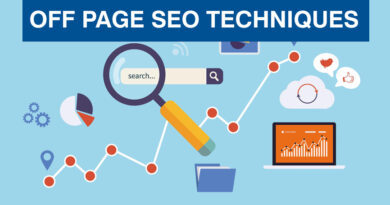The Role of Packaging in Marketing
Packaging plays a critical role in marketing, serving as the face and protector of a product. It goes beyond its functional purpose of containing and preserving goods; packaging has the power to captivate consumers, differentiate brands, and communicate key messages. With its ability to create a lasting impression, packaging acts as a silent salesperson, enticing potential buyers and influencing purchasing decisions. From visually appealing designs that catch the eye to sustainable materials that align with eco-conscious consumers, the role of packaging in marketing is multifaceted and essential in today’s competitive marketplace.
Here are some key aspects of the role of packaging in marketing:
Protection and Preservation
Packaging serves as a protective barrier for the product, safeguarding it from damage, contamination, and deterioration. It ensures that the product reaches the customer in optimal condition, thereby maintaining its quality and integrity. This is particularly important for perishable or fragile items.
Product Differentiation
In a crowded marketplace, packaging helps a product stand out and differentiate itself from competitors. It can create a unique identity, communicate the brand’s values, and convey the product’s positioning. Eye-catching and innovative packaging designs can attract attention and generate interest among consumers.
Branding and Communication
Packaging is an essential vehicle for brand communication. It can incorporate a brand’s logo, colors, typography, and other visual elements that create brand recognition and reinforce brand identity. Packaging printing also provides an opportunity to communicate product features, benefits, usage instructions, and other relevant information to consumers.
Shelf Appeal and Point of Purchase Impact
Packaging plays a critical role in attracting consumers at the point of purchase. It must grab attention and entice potential buyers to choose the product over alternatives. Effective packaging design considers shelf placement, visibility, and the target audience’s preferences to maximize its impact and influence purchasing decisions.
Consumer Experience and Convenience
Packaging design can enhance the overall consumer experience. Easy-to-open and resealable packaging, clear labeling, and ergonomic design can improve convenience and user satisfaction. Packaging that is functional, practical, and aligned with customer needs can contribute to a positive perception of the brand and product.
Marketing and Promotion
Packaging can be used as a marketing tool itself. Special promotions, discounts, or additional product offerings can be communicated through packaging. Limited edition or seasonal packaging can create a sense of urgency and exclusivity, driving sales. Additionally, packaging can serve as a mobile advertisement when consumers carry or use the product in public.
Environmental Considerations
With increasing awareness and concern for the environment, sustainable packaging has gained importance. Environmentally friendly packaging materials and designs that minimize waste and promote recycling can resonate with environmentally conscious consumers and enhance a brand’s reputation.
It’s important for businesses to understand their target audience, market dynamics, and brand positioning when developing packaging strategies. By effectively utilizing packaging, companies can create a positive brand image, increase sales, and build long-term customer loyalty.
How to Improve Product Packaging?
Improving the packaging of a product involves careful consideration of various factors to enhance its appeal, functionality, and overall effectiveness. Here are some strategies to improve product packaging:
Understand your target audience
Conduct market research to gain insights into your target customers’ preferences, needs, and expectations. Understand their demographics, lifestyle, and buying behavior to align your packaging design with their tastes and preferences.
Enhance visual appeal
Invest in attractive and visually appealing packaging designs that capture attention and create a positive first impression. Use high-quality graphics, colors, and typography that reflect your brand identity and convey the product’s value. Consider incorporating unique and eye-catching elements to stand out on store shelves.
Prioritize clarity and simplicity
Ensure that the packaging clearly communicates essential information such as product name, features, usage instructions, and branding. Use concise and easy-to-understand language to guide consumers. Avoid clutter and focus on conveying the key selling points and benefits of the product.
Optimize functionality and convenience
Improve the practicality and usability of the packaging. Consider factors such as ease of opening, resealability, portion control, and storage convenience. Functional packaging that enhances the overall user experience can leave a positive impression on customers.
Utilize eco-friendly materials
Incorporate sustainable and environmentally friendly packaging materials to align with the growing consumer demand for eco-conscious choices. Opt for recyclable, biodegradable, or compostable materials that reduce environmental impact while maintaining product integrity.
Incorporate branding elements
Ensure that the packaging design aligns with your brand identity and conveys your brand’s values. Incorporate your logo, tagline, and consistent brand colors and imagery. Consistent branding across all packaging elements creates recognition and strengthens brand loyalty.
Consider practicality in distribution
Evaluate the efficiency of packaging in terms of logistics, transportation, and storage. Optimize packaging dimensions to reduce waste and shipping costs while ensuring product protection. Streamlining the packaging process can result in cost savings and environmental benefits.
Seek customer feedback
Engage with your customers to gather feedback on the packaging. Conduct surveys, focus groups, or social media polls to understand their perceptions, suggestions, and areas for improvement. Customer insights can provide valuable guidance for refining packaging designs and making informed decisions.
Stay updated with industry trends
Keep an eye on emerging packaging trends, innovations, and technologies. Stay updated with advancements in materials, printing techniques, and sustainable packaging solutions. By staying current, you can identify opportunities to differentiate your packaging and stay ahead of the competition.
Remember that packaging improvement should align with your brand identity, target market, and product characteristics. Regularly evaluating and evolving your packaging strategy can help you stay relevant, attract consumers, and enhance the overall product experience.




